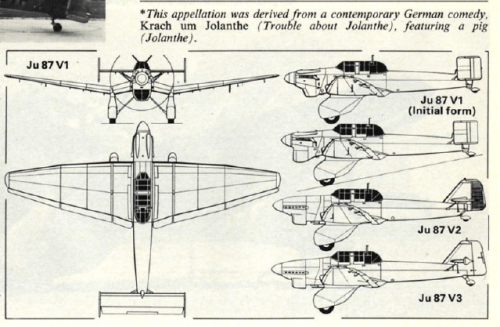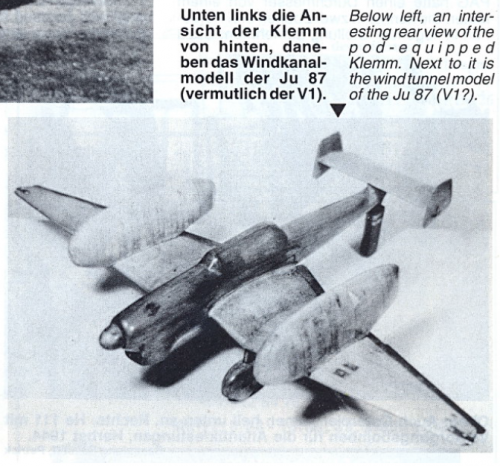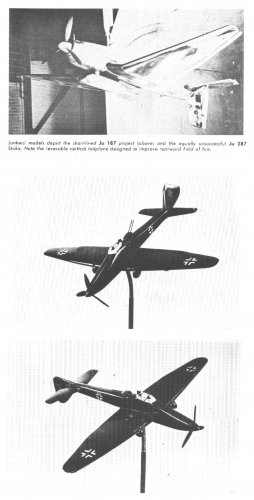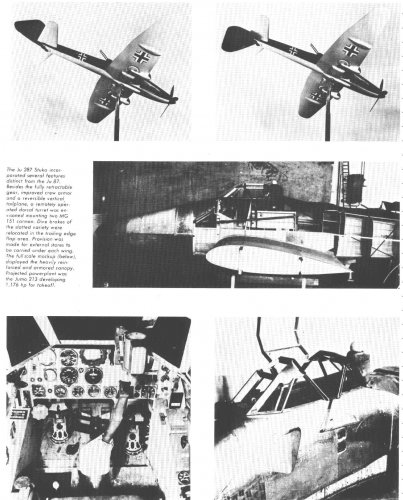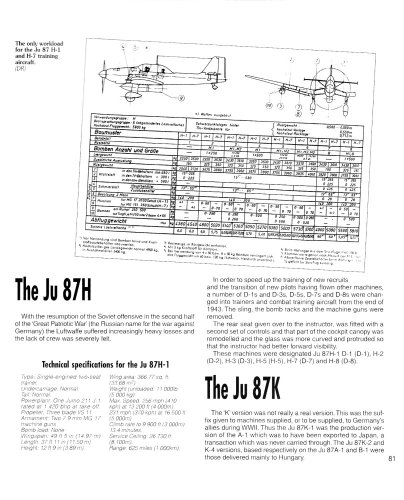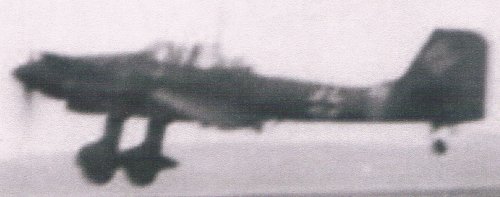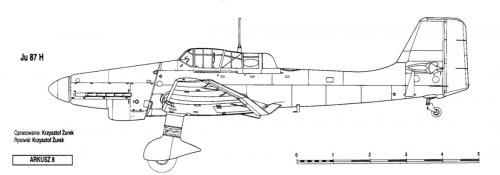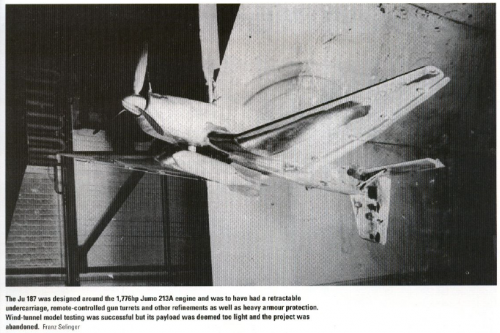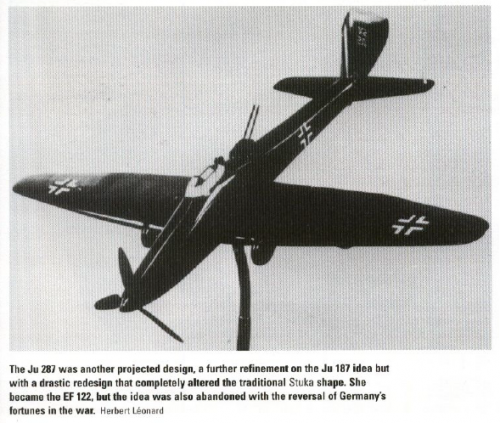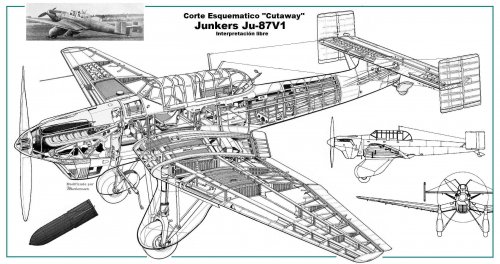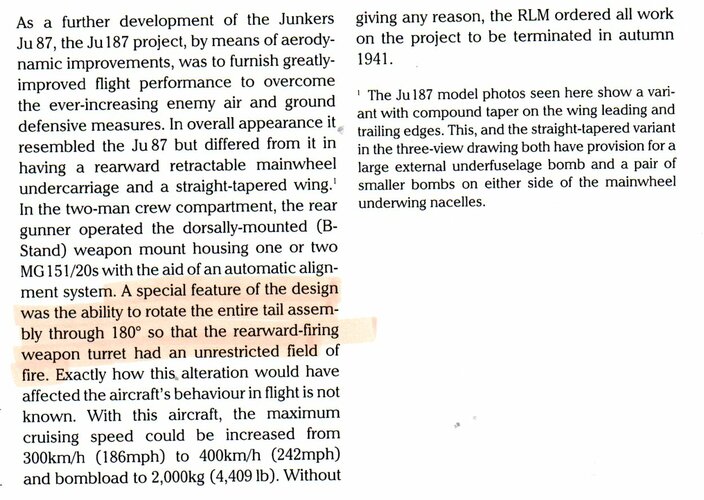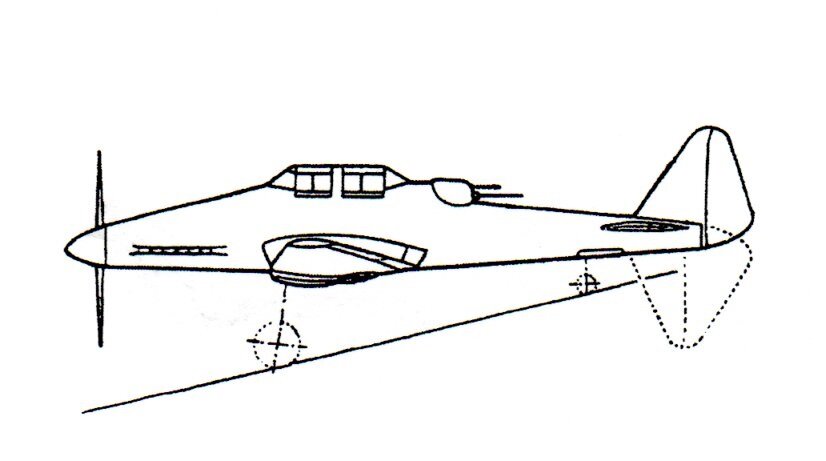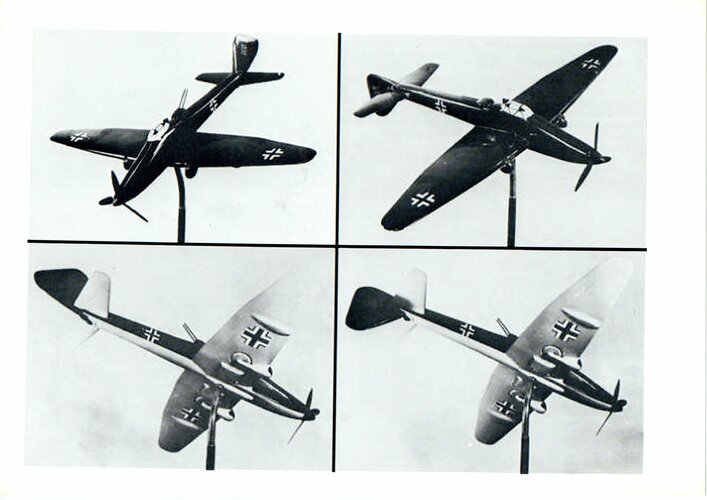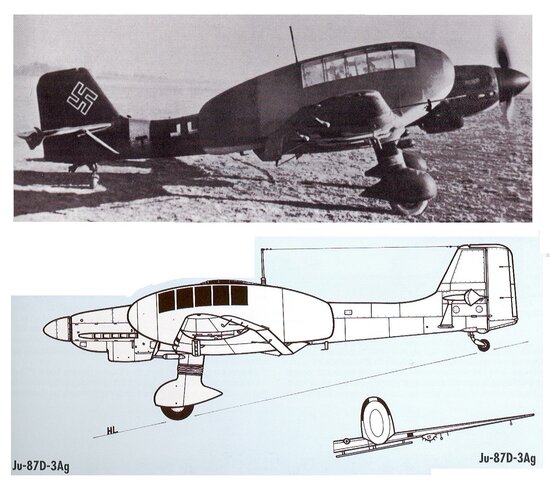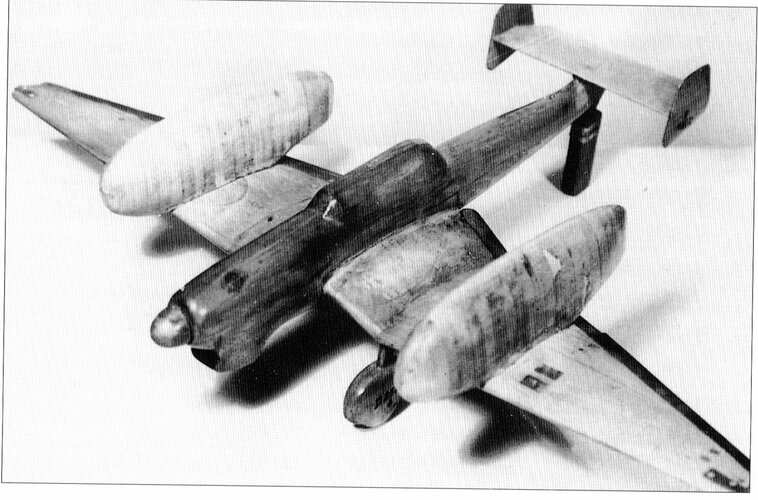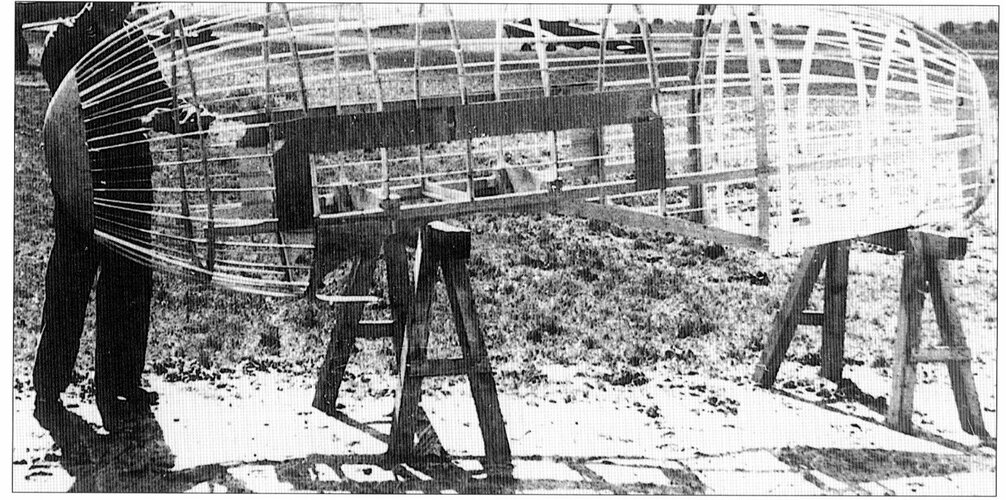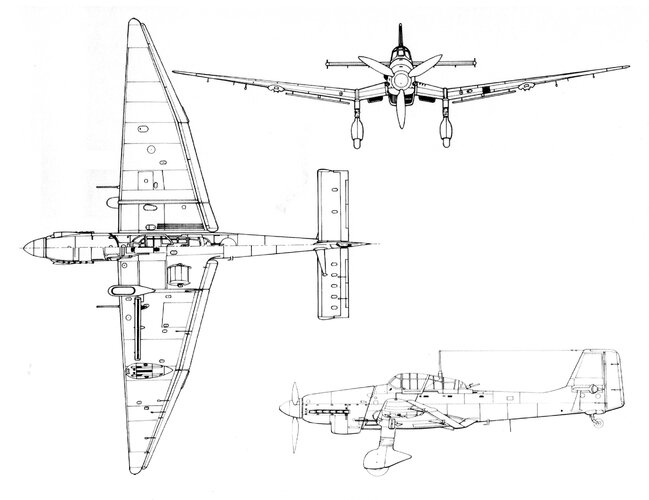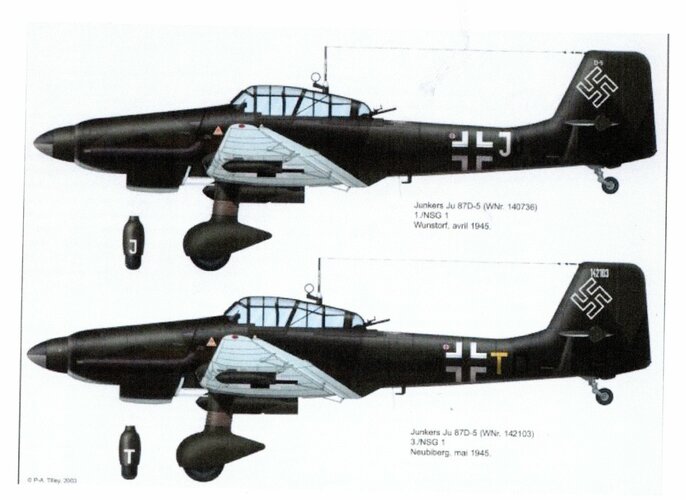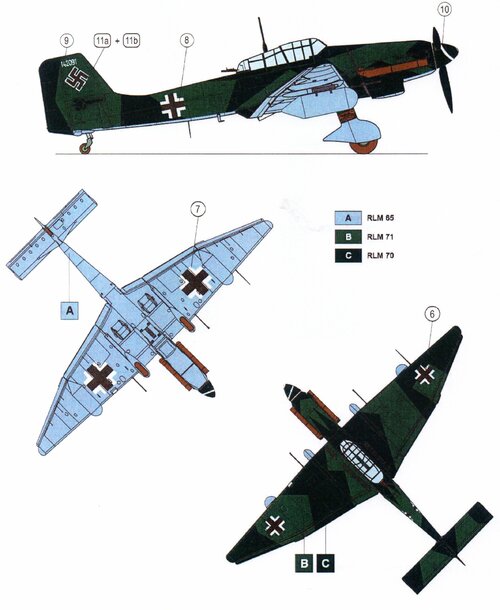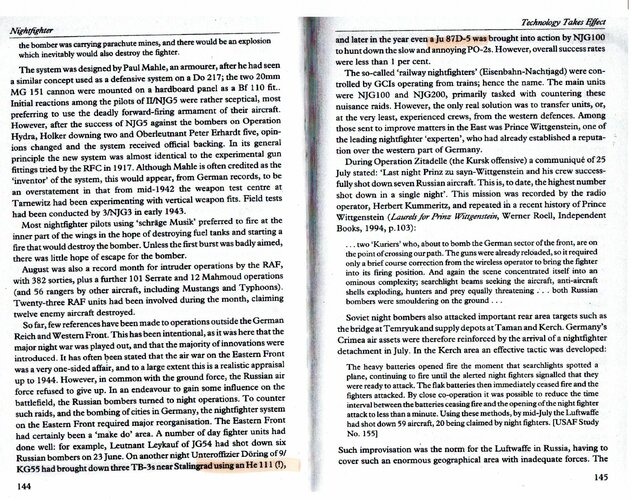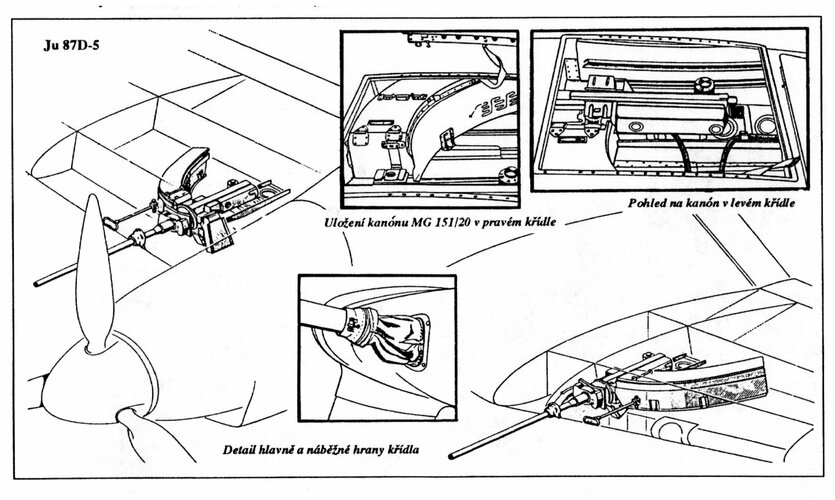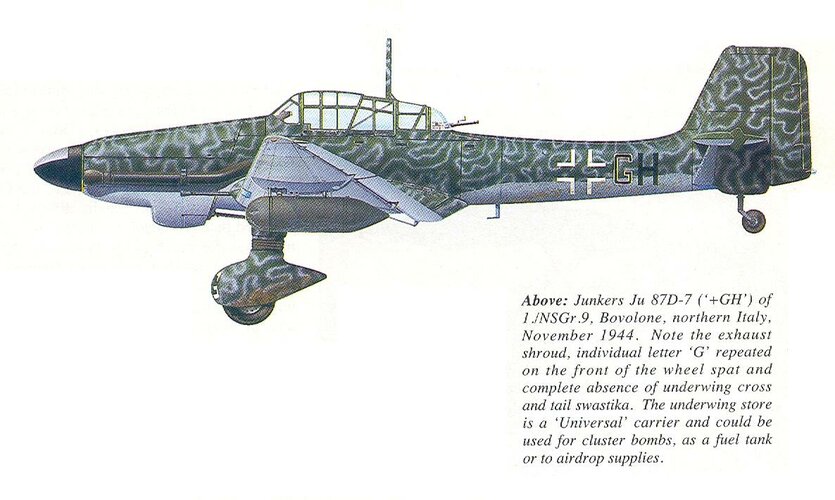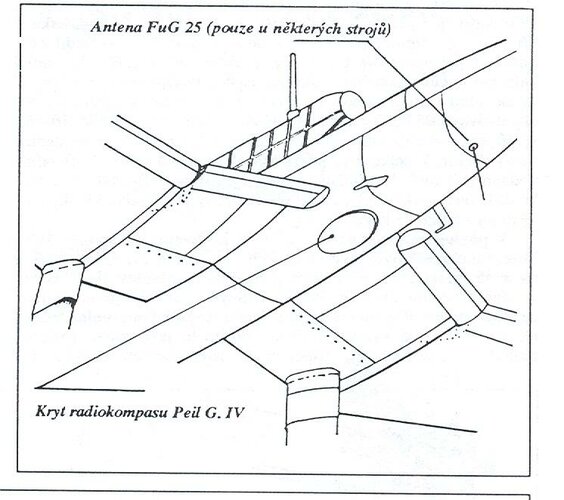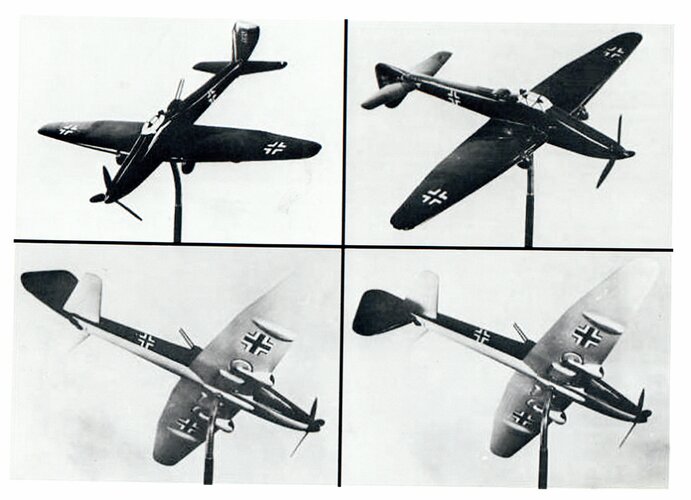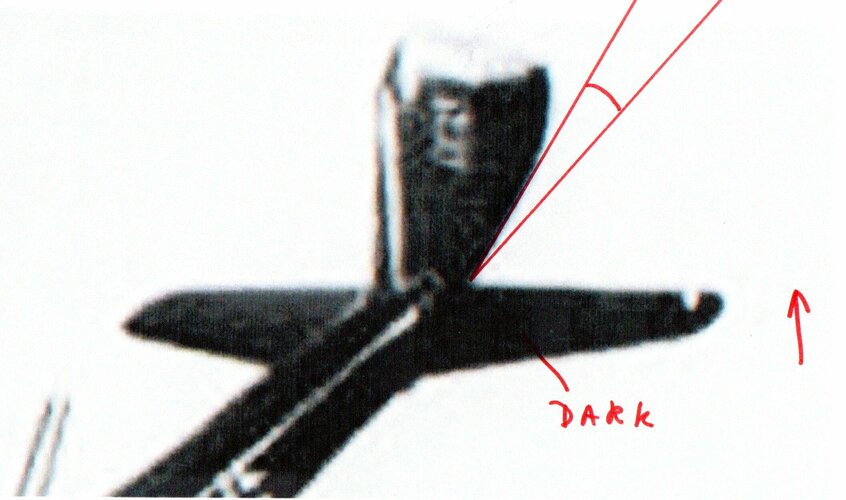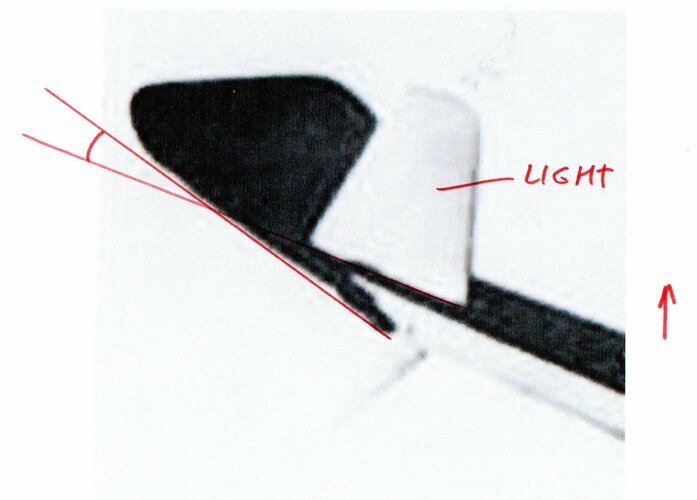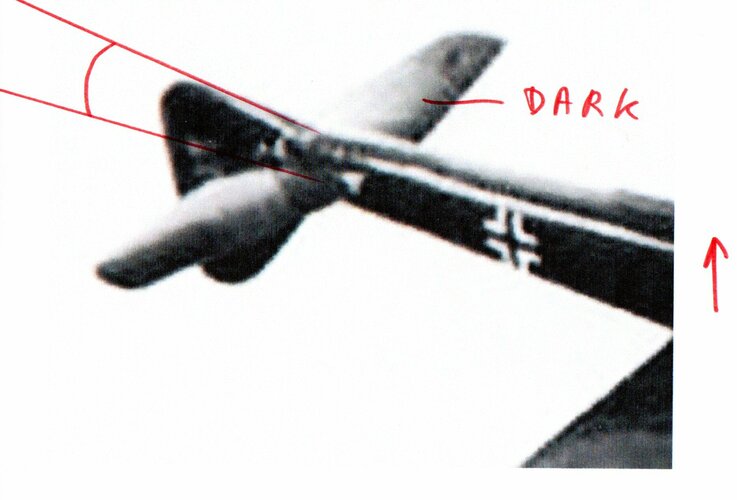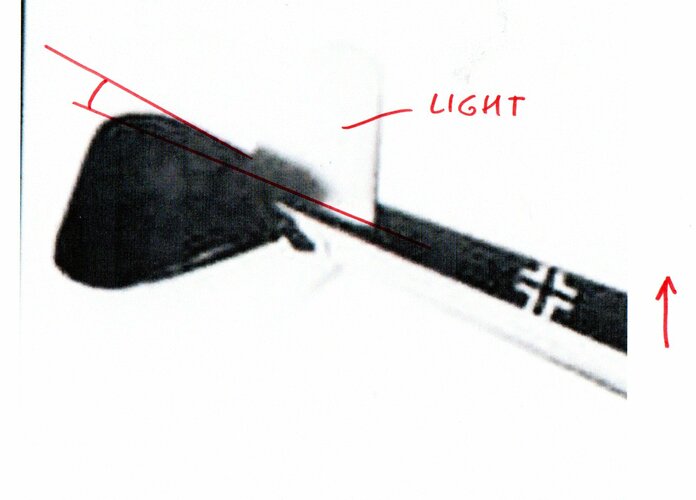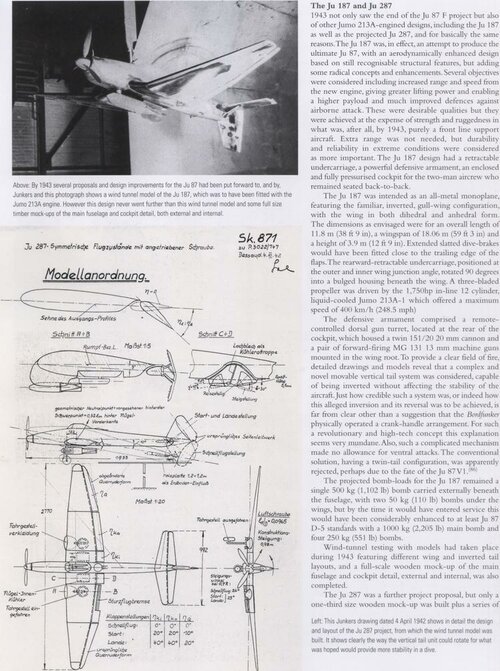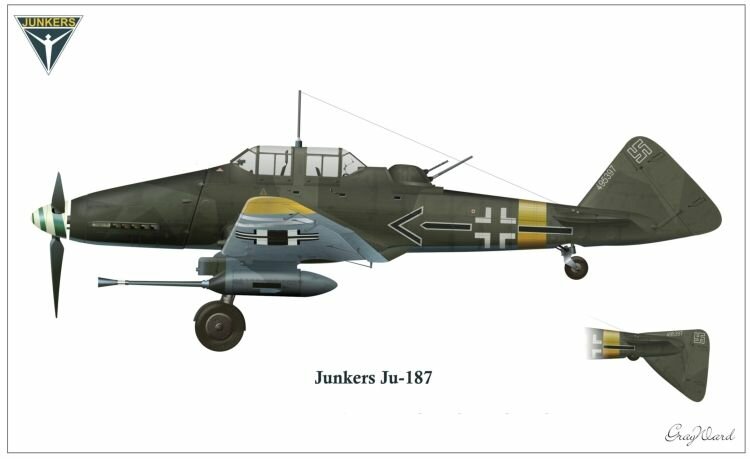You are using an out of date browser. It may not display this or other websites correctly.
You should upgrade or use an alternative browser.
You should upgrade or use an alternative browser.
Junkers Ju 87 - Development, Variants , Related Projects
- Thread starter GTX
- Start date
- Joined
- 11 March 2006
- Messages
- 8,608
- Reaction score
- 3,063
C
CostasTT
Guest
Also, the canopy looks funny and the rear fuselage does not look like a monocoque structure. In fact, it looks more like a fabric covered frame.Jemiba said:The same photo is shown in Novarra "Die ndeutsche Luftrüstung 1933 - 1945" and in
Peter E.Smith "Stuka",, in both caes clearly described as "Attrappe" (mock-up), which
is supported by the open structure at the nose, I think.
- Joined
- 11 March 2006
- Messages
- 8,608
- Reaction score
- 3,063
hesham said:...differed a little from which originally built.
Not really to my opinion, both drawings show the Ju 87 V1, fitted with an RR Kesrel engine. The
second drawing from top just shows it with a modified radiator cowling to cure overheating
problems. But the V1 flew in both guises.
- Joined
- 11 March 2006
- Messages
- 8,608
- Reaction score
- 3,063
Interesting to see, that here the V1 was used as a basis, whereas
actually those pods were only tested on the D version. So there probably
were wind tunnel tests with other models, too, as with this model, they
may not have been significant, I think.
actually those pods were only tested on the D version. So there probably
were wind tunnel tests with other models, too, as with this model, they
may not have been significant, I think.
- Joined
- 25 June 2009
- Messages
- 13,782
- Reaction score
- 3,062
- Joined
- 25 June 2009
- Messages
- 13,782
- Reaction score
- 3,062
Arjen said:I accept there was a Ju187 design for a Stuka-successor. However, it appears two completely different designs are tagged with the Ju 287 moniker, and I'm hesitant to accept a Stuka-successor as a proper Ju 287. The attached picture shows the Ju 287 V1 of 1944. Could someone enlighten me on this subject?
There doesn't seem to have been any reply to this 4-year-old question, but I guess Arjen found the answer since then...
Just for the record, the Ju 287 designation was reused for a completely different program, of course. A lot more here:
http://www.secretprojects.co.uk/forum/index.php/topic,7727.0
- Joined
- 6 November 2010
- Messages
- 4,228
- Reaction score
- 3,166
Stéphane, Justo Miranda gave the answer to my question in reply #26. There was indeed a Ju87 development/successor project called Ju287 - the first use of that number. The answer was contained in a scanned image, which would not be shown in a text search of the forum.Skyblazer said:There doesn't seem to have been any reply to this 4-year-old question, but I guess Arjen found the answer since then...
richard
ACCESS: Top Secret
- Joined
- 1 May 2006
- Messages
- 578
- Reaction score
- 127
Skyblazer said:The unbuilt Ju 87 H and Ju 87 K as described in Herbert Leonard's and André Jouineau's The Junkers Ju 87 From 1936 to 1945 (Plane and Pilots 4, Histoire & Collections):
Thank you for the side view of a Ju 87 H : it is very different of those published in the literature …
I have never seen a photo of a Ju 87 H ? I would be very pleased to see one posted here .
Some years ago , I scanned this picture showing a Ju 87 : could it be a Ju 87 H ?
Attachments
I wonder (actually, I'm sure of this) if the Ju-187 with that folding tail actually entered service, if the Luftwaffe would find the design a maintenance nightmare and lock the fin in the upper vertical position. Then the Berta-model would do away with the folding mechanism altogether. The system always seemed overly complex, structurally heavy and prone to battle (and wear) damage.
richard
ACCESS: Top Secret
- Joined
- 1 May 2006
- Messages
- 578
- Reaction score
- 127
Skyblazer said:The only other picture I have of a Ju 87 H, unfortunately, is not a photo but this profile view:
Skyblazer said:The unbuilt Ju 87 H and Ju 87 K as described in Herbert Leonard's and André Jouineau's The Junkers Ju 87 From 1936 to 1945 (Plane and Pilots 4, Histoire & Collections):
In the books by William green , the Ju 87 H is only a Ju 87 D with rear gun deleted ; In your above post (Plane and Pilots 4) , you kindly share with us an original document showing a side view of the Ju 87 H . This remembered me this intriguing photo of , so far I can see , a Ju 87 with an unusual canopy , similar to the one shown in " Plane and Pilots 4 " .
I believe it COULD be a Ju 87 H ...
- Joined
- 25 June 2009
- Messages
- 13,782
- Reaction score
- 3,062
richard said:In the books by William green , the Ju 87 H is only a Ju 87 D with rear gun deleted
William's Green numerous 1960s publications were great for the time and certainly accurate 90% of the time, but on certain subject such as German or Japanese aircraft, notably, they later showed their limitations. The same can be said for instance of Heinz Nowarra's books on German aircraft or Yefim Gordon's books on Soviet aircraft. Later research and newly discovered documents made some of these books incomplete or inaccurate in places.
richard said:In your above post (Plane and Pilots 4) , you kindly share with us an original document showing a side view of the Ju 87 H . This remembered me this intriguing photo of , so far I can see , a Ju 87 with an unusual canopy , similar to the one shown in " Plane and Pilots 4 " .
You've already said so! But if no-one commented, it's because probably no-one has anything valuable to say about it for the time being...
The same pictures are posted only a couple of posts earlier... 
- Joined
- 11 March 2006
- Messages
- 8,608
- Reaction score
- 3,063
This is, to my opinion, an incomplete designation. 
There were lots of projects "Junkers EF ...", the important information,
the number to this EF designation isn't given here, maybe forgotten, or the
author (we don't know, who it was, as the source isn't mentioned .... : )
)
wasn't aware of its importance.
The text says "Design for a ground attack aircraft with a BMW 801 engine,
based on the Ju 187, single seater, similar to the early layout of the Il-2"
Perhaps the EF 82 was meant ?
http://www.secretprojects.co.uk/forum/index.php/topic,14491.msg144358.html#msg144358
There were lots of projects "Junkers EF ...", the important information,
the number to this EF designation isn't given here, maybe forgotten, or the
author (we don't know, who it was, as the source isn't mentioned .... :
wasn't aware of its importance.
The text says "Design for a ground attack aircraft with a BMW 801 engine,
based on the Ju 187, single seater, similar to the early layout of the Il-2"
Perhaps the EF 82 was meant ?
http://www.secretprojects.co.uk/forum/index.php/topic,14491.msg144358.html#msg144358
Motocar
I really should change my personal text
- Joined
- 16 May 2014
- Messages
- 896
- Reaction score
- 707
- Joined
- 6 September 2006
- Messages
- 4,324
- Reaction score
- 7,503
I believe the switch was made due to stability concerns and of course the tail of the V1 had some structural weaknesses that resulted in its collapse and crash.
The single tail then appeared to the be the simpler and safer solution.
The single tail then appeared to the be the simpler and safer solution.
- Joined
- 21 May 2006
- Messages
- 2,709
- Reaction score
- 1,631
Hood said:I believe the switch was made due to stability concerns and of course the tail of the V1 had some structural weaknesses that resulted in its collapse and crash.
The single tail then appeared to the be the simpler and safer solution.
Thank you Hood
Regards
Pioneer
Mock-up and V-1
Attachments
-
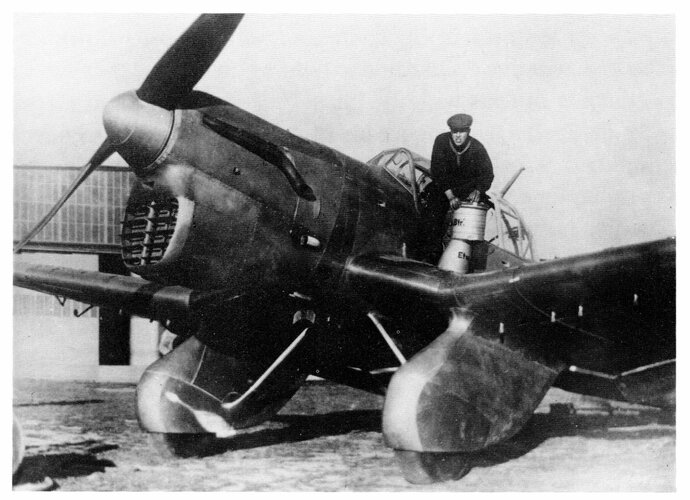 576.jpg671 KB · Views: 96
576.jpg671 KB · Views: 96 -
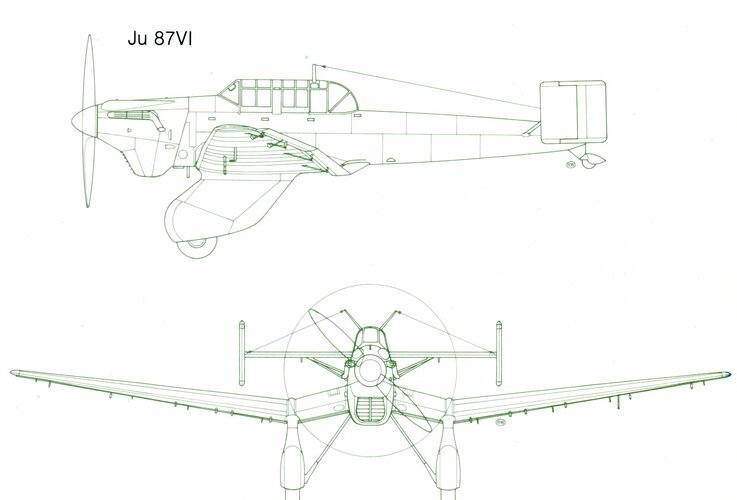 577.jpg170.8 KB · Views: 79
577.jpg170.8 KB · Views: 79 -
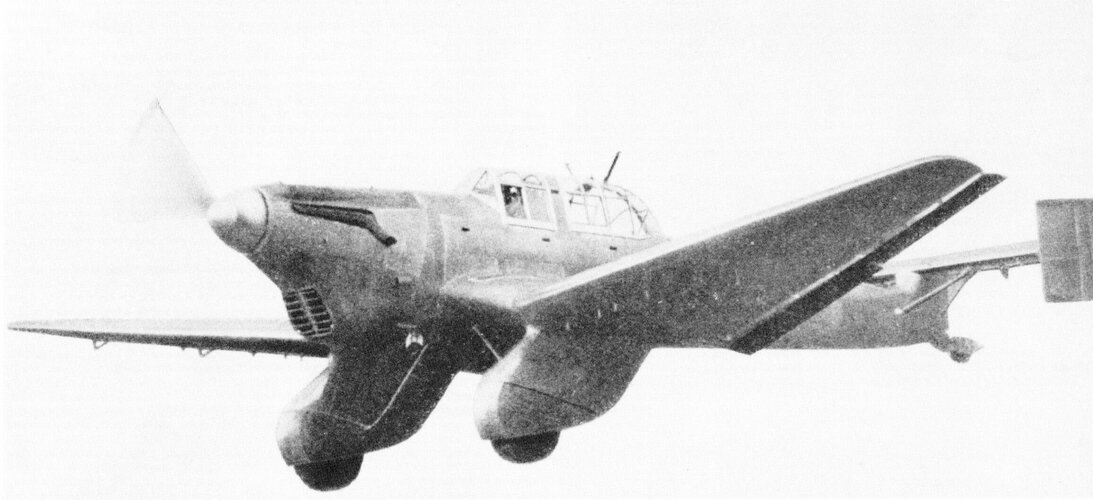 578.jpg568.8 KB · Views: 72
578.jpg568.8 KB · Views: 72 -
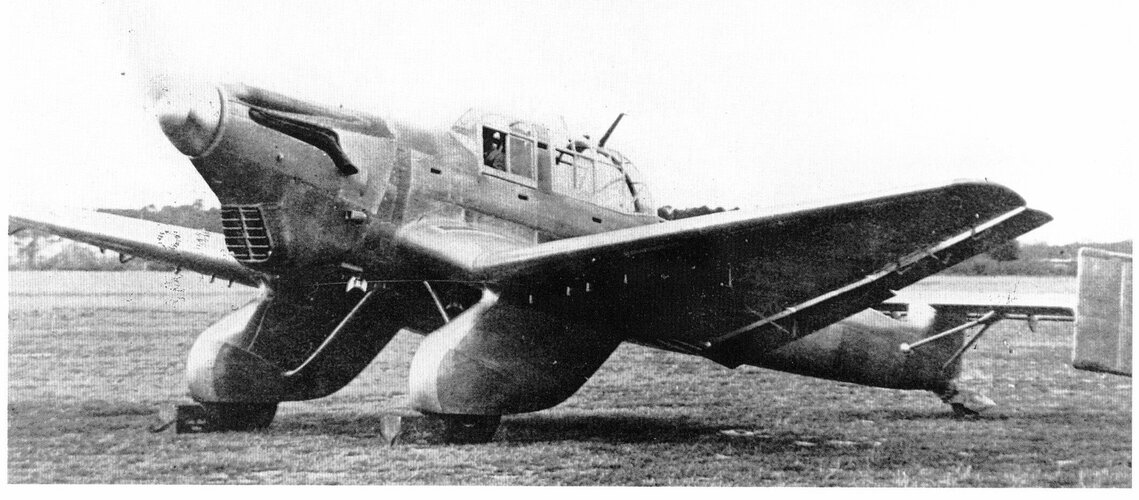 579.jpg571.7 KB · Views: 72
579.jpg571.7 KB · Views: 72 -
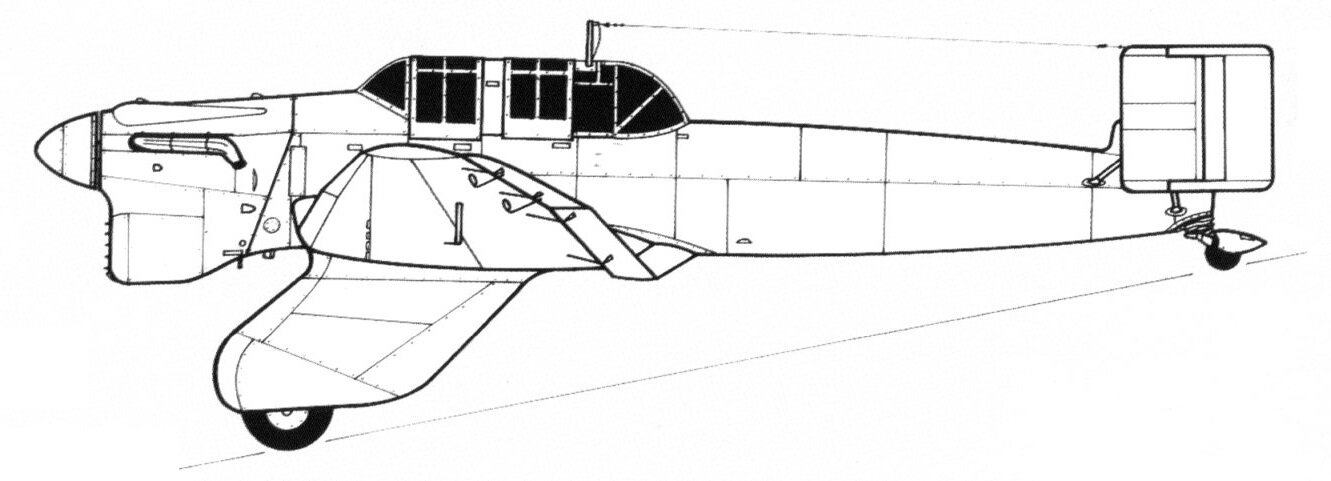 580.jpg119.7 KB · Views: 73
580.jpg119.7 KB · Views: 73 -
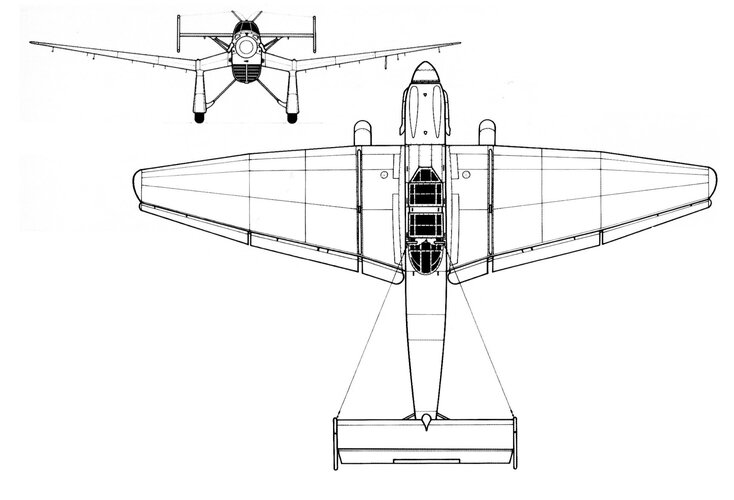 581.jpg227.8 KB · Views: 73
581.jpg227.8 KB · Views: 73 -
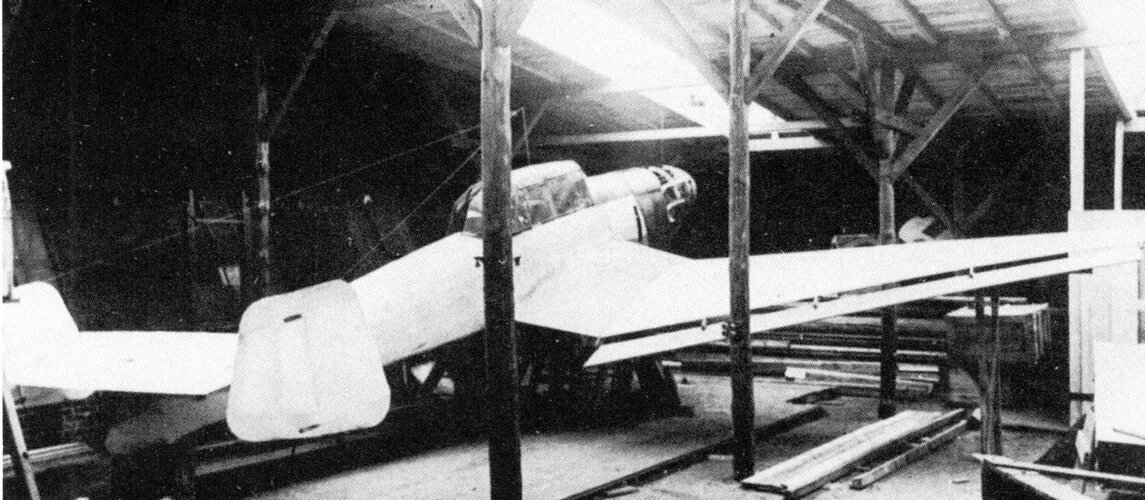 586.jpg398.6 KB · Views: 72
586.jpg398.6 KB · Views: 72 -
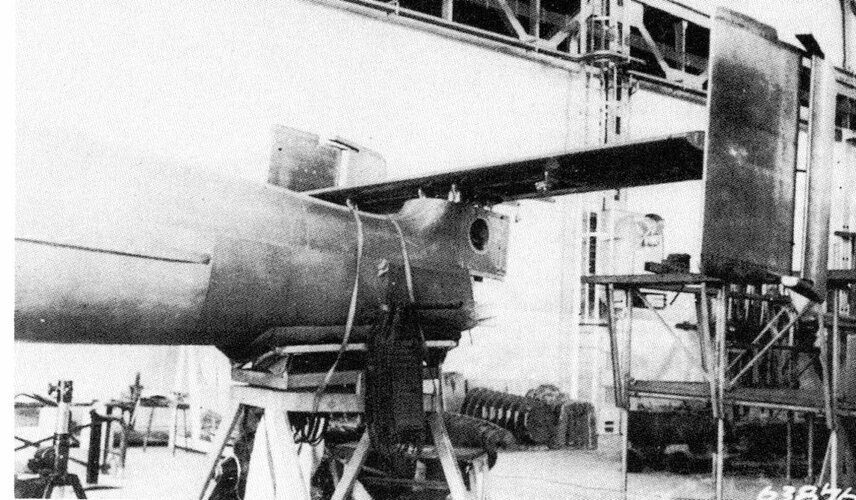 587.jpg282.1 KB · Views: 64
587.jpg282.1 KB · Views: 64 -
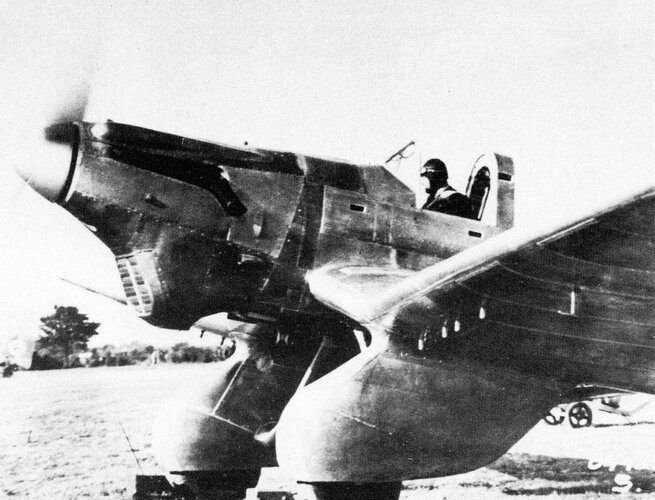 588.jpg671.9 KB · Views: 61
588.jpg671.9 KB · Views: 61 -
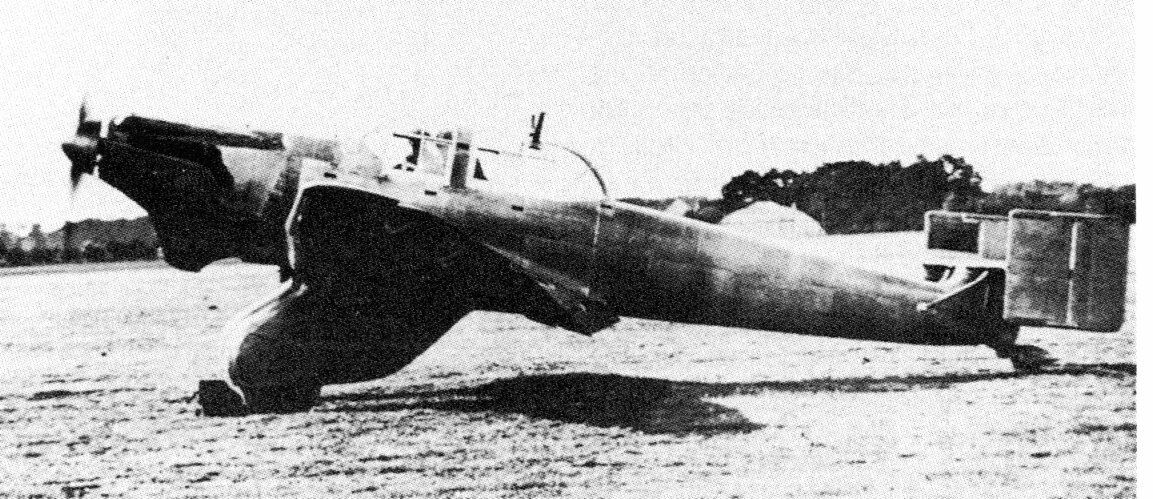 589.jpg201.3 KB · Views: 58
589.jpg201.3 KB · Views: 58 -
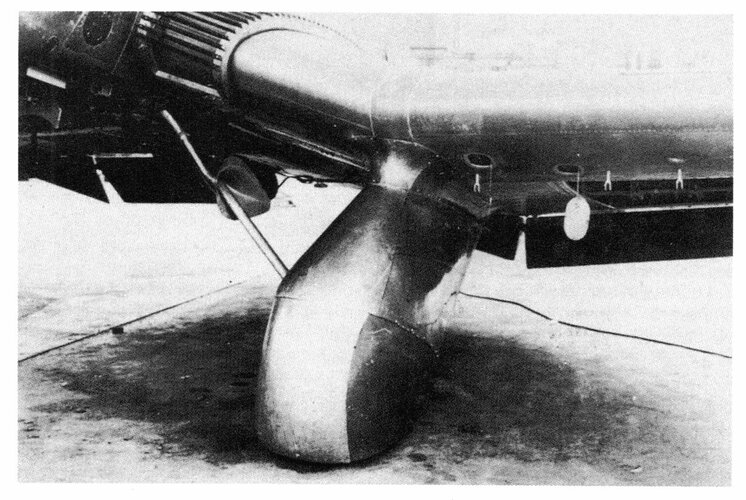 591.jpg305.4 KB · Views: 57
591.jpg305.4 KB · Views: 57 -
 592.jpg568 KB · Views: 69
592.jpg568 KB · Views: 69
- Joined
- 11 June 2014
- Messages
- 1,333
- Reaction score
- 1,780
Vertical tailfin transition
This is rubbish. The triangular tailfin didn't rotate at all. It was hinged at the point where it met the fuselage and simply went up and down - which you can see from the model photos.
If you're having trouble interpreting the images, I suggest you consult with an expert
Attachments
- Joined
- 11 June 2014
- Messages
- 1,333
- Reaction score
- 1,780
If you're having trouble interpreting the images, I suggest you consult with an expert
Glad to see you agree with me! Herwig is just plain wrong about the "ability to rotate the entire tail assembly through 180-degrees" (the text you included in reply #70, image 593, with the quote highlighted, presumably by you, which I was saying was rubbish). As your images show, it's just the fin moving up and down. The tailplanes remain fixed.
Incredible to think Herwig actually believed the entire tail assembly would spin around in flight. He even had poor Heinz Rode add the rotation point to his artwork on the same page (see below)!
Incidentally, Herwig is also wrong about the type's designation and the date. This is the Ju 287 of 1942-43 (the same designation later being reused for the jet bomber in 1944). The Ju 187 was a different design with what appears to be a fixed rectangular fin, shown in the photo on your scan 'a4tyHbS'. The drawing on that same page, showing the design with the upwards/downwards moving fin, has the 'Ju 287' designation on it. Very little is known about the Ju 187 before it evolved into the Ju 287, for which much more documentary evidence exists.
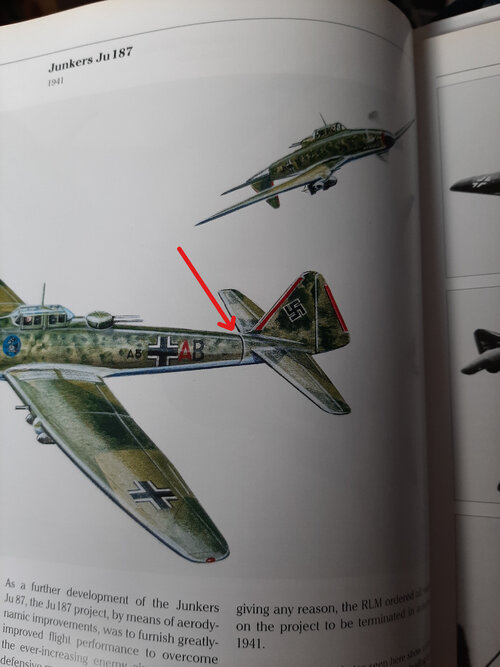
Last edited:
- Joined
- 19 July 2016
- Messages
- 3,728
- Reaction score
- 2,694
I find it hard to see how a rotating tail unit would work, control cables anyone? I always had issue with this particular element, could not get my head around it.
Could the vertical stabiliser have been mounted inverted? Perhaps with a tail wheel in the unit?
Could the vertical stabiliser have been mounted inverted? Perhaps with a tail wheel in the unit?
alejandrogrossi
ACCESS: Secret
- Joined
- 20 September 2019
- Messages
- 218
- Reaction score
- 338
One questionJu-87 unusual devices-Post-3
The torpedo version was de Ju-87D.
Never was a torpedo version of the B?
- Joined
- 11 June 2014
- Messages
- 1,333
- Reaction score
- 1,780
I find it hard to see how a rotating tail unit would work, control cables anyone? I always had issue with this particular element, could not get my head around it.
Could the vertical stabiliser have been mounted inverted? Perhaps with a tail wheel in the unit?
Maybe the word 'rotating' is what's causing confusion here. The tailfin was a triangle, fixed to the rear fuselage at one corner on a pivot. It could be pivoted up, or pivoted down - just like a flap goes up and down.
The original period wind tunnel model drawing Justo posted as 'a4tyHbS' shows the movement best. Quite how the rudder was supposed to be actuated seems like the real question to me!
- Joined
- 6 November 2010
- Messages
- 4,228
- Reaction score
- 3,166
If the entire tail (fin, stabilizer) would rotate 180 degrees along the fuselage's longitudinal axis, what was the stabilizers' camouflaged upper surface in takeoff configuration would become the camouflaged lower surface in in-flight configuration. Looking at the model images, I can see camouflaged stabilizer upper surfaces in both configurations. The modelmaker may have made two different tails for one model, or two different models altogether. I think both are unlikely.
The in-flight configuration in 620.jpg shows the fin's upper edge at a slight upward angle with the stabilizer's lower surface, the takeoff configuration in 617.jpg and 618.jpg shows the fin's lower edge at a distinctly bigger upward angle with the stabilizer's lower surface. That bigger upward angle would translate to a bigger downward angle if the entire tail would rotate 180 degrees along the fuselage's longitudinal axis.. That's not what 619.jpg and 620.jpg show.
If all four images show the same model, the modelmaker hinged the fin to rotate ~90 degrees downward to show the in-flight configuration.
I think it is likely the model's translation from takeoff to in-flight configuration matched the one chosen for the Ju 187's design.
The in-flight configuration in 620.jpg shows the fin's upper edge at a slight upward angle with the stabilizer's lower surface, the takeoff configuration in 617.jpg and 618.jpg shows the fin's lower edge at a distinctly bigger upward angle with the stabilizer's lower surface. That bigger upward angle would translate to a bigger downward angle if the entire tail would rotate 180 degrees along the fuselage's longitudinal axis.. That's not what 619.jpg and 620.jpg show.
If all four images show the same model, the modelmaker hinged the fin to rotate ~90 degrees downward to show the in-flight configuration.
I think it is likely the model's translation from takeoff to in-flight configuration matched the one chosen for the Ju 187's design.
Last edited:
Similar threads
-
-
Various Lippisch Tailless and Delta Projects
- Started by richard
- Replies: 53
-
Junkers EF-130 speculative drawings
- Started by Justo Miranda
- Replies: 47
-
-


